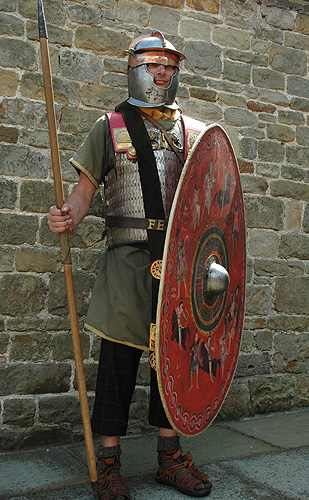Agora |
|
I've liked what the film auteur Alejandro Amenábar has done in the past. Abre Los Ojos (1997) was such a good film that it prompted Cameron Crowe to remake it in English soon afterward. The remake (Vanilla Sky, 2001) wasn't particularly successful for various reasons, but none of those reasons for failure reflected back on Amenábar. The Others (2001) was a nifty little English-language ghost story which drew favorable comparisons to The Sixth Sense. Mar adentro, a 2004 biopic about a quadriplegic who fought for his legal right to die with dignity, won the Oscar for the best film in a foreign language. Those three films are each rated at least 7.8 at IMDb, thus placing their director in the pantheon of greats, a feat made even more impressive by the fact that he also wrote the scripts and composed the music for the films, and even did the editing on Mar adentro. That filmography seemed to bode well for Agora, an ambitious film about Hypatia, the famous Alexandrian philosopher and mathematician who was probably the greatest female intellectual of ancient times. Unfortunately, this project proved as wrong for Amenábar as Vanilla Sky was for Cameron Crowe. In his past films Amenábar has never had to deal with matters requiring scholarly research and historical accuracy. The true story of the quadriplegic Ramon Sampedro (1940-1998) took place in modern times, with all the details well established and documented. The other two films mentioned above were genre efforts, a sci-fi tale and a ghost story, essentially works of the imagination which required no special conformity to any details in the real world. Agora was a whole different kettle o' crawdads. The common wisdom on Hypatia (hi-PAYSH-yeh) is based more on legend, literature, and folklore than on reality. It would be necessary to systematically separate the real from the fantastical before telling her story, because dozens of generations and various causes have cobbled her story to suit their personal agendas. Recreating the world of ancient Alexandria accurately would require sifting through a lot of dry scholarly texts, and ignoring a lot of conventional wisdom. Even some very brilliant minds have failed in this regard. The scientist/storyteller Dr. Carl Sagan, for example, utterly misreported the circumstances behind the disappearance of the great library of Alexandria. If the great Sagan failed at a task, would you feel ambitious enough to give it a shot? Amenábar was. He not only failed in this regard, but failed miserably. In fact, he failed so miserably that it seemed as if he did no research of any kind, but simply created characters and times which were 100% fictional, albeit tagged with real names. Let's begin with the destruction of the "Great Library." This film takes on the Sagan meme that it was destroyed by a fanatical Christian mob in 391 A.D. There are so many things wrong with that premise that it's difficult to know where to begin. The Serapeum, the building which was taken over by the mob in 391, was not a library at that time, but a temple to Serapis, as you may have guessed from the name. The mob pulled down all the statues dedicated to the ancient gods, but they didn't burn any books, or at least there is no evidence to suggest that they did. There were historians, both pagan and Christian, who lived in Alexandria at the time of the riots, and not a single one mentions the loss of books. The Christian Socrates Scholasticus makes no reference to a library or library contents being destroyed, only to religious objects being destroyed. The pagan author Eunapius of Sardis witnessed the demolition, and though he detested Christians, and was a scholar, his account of the Serapeum's destruction makes no mention of any books. It seems that the Serapeum had hosted a collection of scrolls at one time, but the pagan historian Ammianus Marcellinus, writing about a decade before the riots, indicates that the building's library function was in the past. So how was the "Great Library" really destroyed? Well, to begin with, that great library, as it was understood by the ancients using the Greek language, referred to the collection of books, not the building which housed it. The lion's share of Alexandria's collection was housed in a dedicated building, but that was not the Serapeum, which was in the Egyptian sector. The Royal Library was far across town, in the Greek sector, in a building near the harbor, adjacent to the Musaion. (See the map below).
The collection seems to have disappeared in stages, with the first and most important tragedy occurring when Julius Caesar set fire to some ships in 48 B.C., a conflagration which spread to the docks, then to the seaside library. That is Plutarch's version of the story. Plutarch wrote that account about 150 years after the incident, circa 100 A.D, and his account may be spurious, but the important fact is not how the books were destroyed, but the fact that they were gone by then. If Plutarch wrote of the great collection as an artifact of the past in 100 A.D., then it could not have been destroyed in 391. Even if we grant the veracity Plutarch's version, it does not seem to modern scholars that Caesar was responsible for the complete destruction of the book collection. All of the evidence indicates that some of the volumes survived and some of those survivors continued to be housed in the same building, but the collection seems to have continued to deteriorate over the centuries. As for the building itself, we do not know precisely when the Royal Library, the architectural triumph which had once housed the vast collection of scrolls, was finally reduced to rubble. The most likely scenario seems to be that it was demolished in the general destruction that accompanied the wars between Zenobia of Palmyra and the Roman Emperor Aurelian, circa 270 A.D.
Second, the Roman legions in this film were dressed like the legions of the time of Augustus, in mufti with which we are quite familiar from a myriad of films. Unfortunately, this story took place four centuries later, with the key events occurring in 391 and 415. Dressing the Roman soldiers like that was roughly tantamount to making a film about the Iraqi War and showing the combatants dressed like Henry VIII and battling with matchlocks and bows. The pictures below show what the Roman soldiers of the 4th (left) and 5th (right) centuries looked like.
Third, there were innumerable inaccuracies relating to Hypatia herself, many of them major:
Setting aside the history, I did like some elements of the film. It looks great and I enjoyed, for example, the overhead bird's-eye-view shots which allow the viewer to get the proper perspective on where people were relative to other people and city landmarks. But I just found the film so irritating in its manipulation of fact to sell its perspective that I couldn't enjoy it the way I might have if it had simply admitted it was just an entertainment picture like Gladiator. Except, of course, that it isn't really very entertaining. |
|||
|
||||
|
||||



